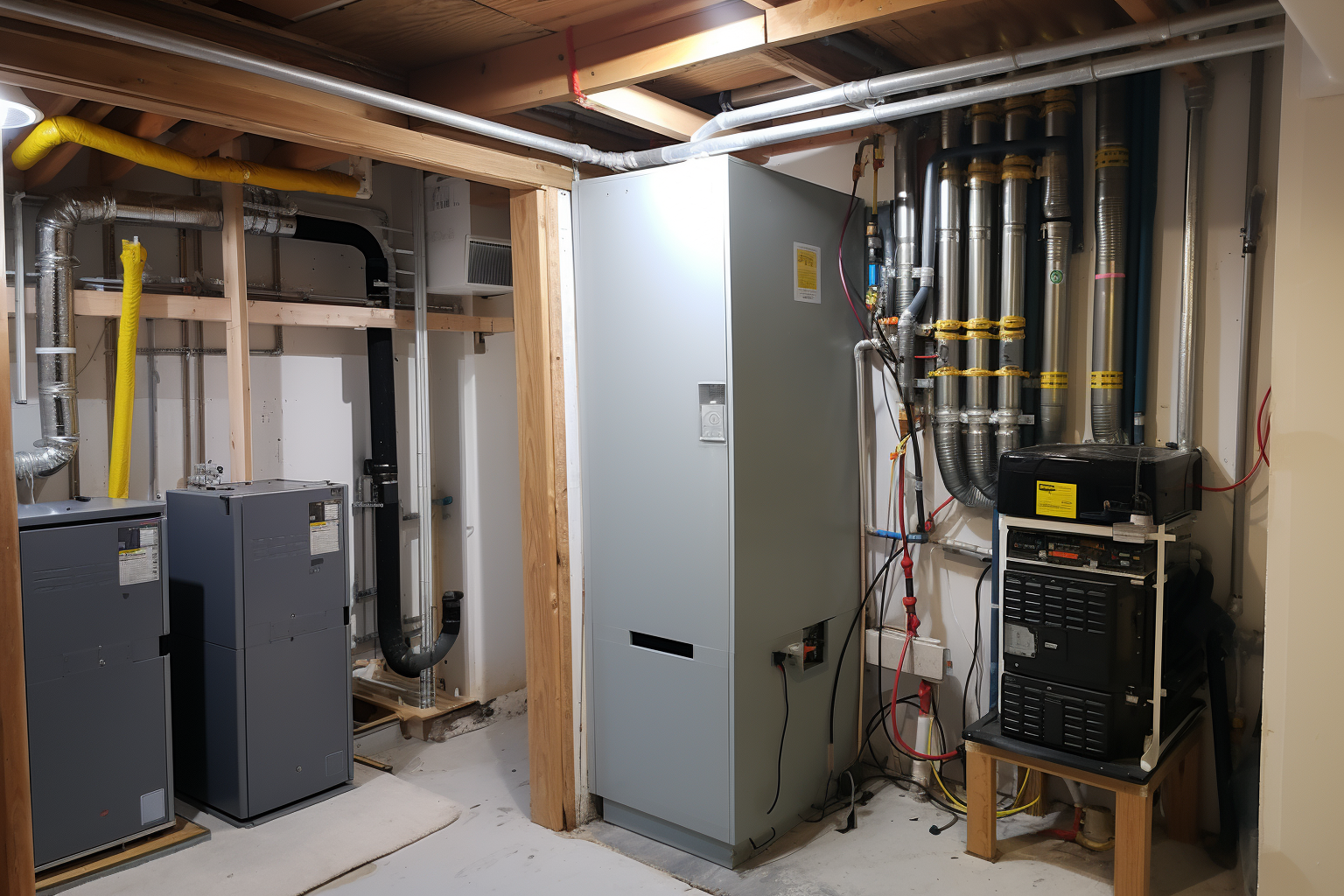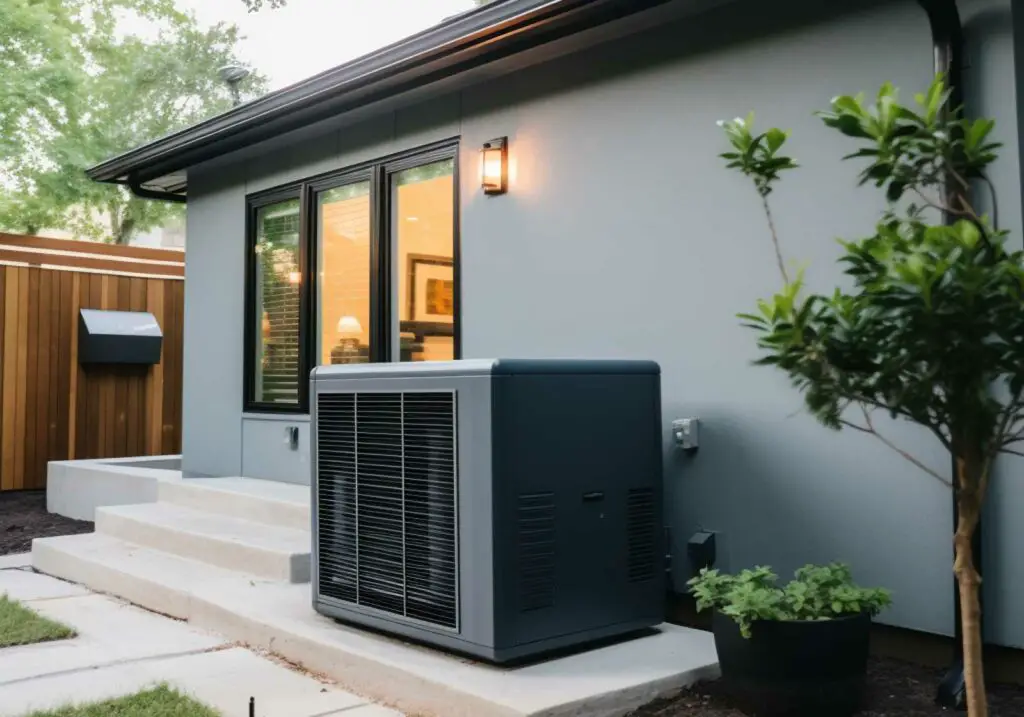You’ve just returned home from a long day, and all you want is to escape the sweltering heat. You turn on your HVAC system, but instead of that refreshing gust of cold air, you’re met with… nothing. Your central air conditioner hums, but the air stays stagnant. Sounds like a nightmare, doesn’t it? Well, it’s a reality for many, and if you’re reading this, probably for you too.
But here’s the good news: We’ve cracked the code.
This guide will reveal why your central AC is running but not blowing air and give you actionable steps to fix it.
But wait, what if it’s not just a dirty filter? What about those mysterious noises your AC has been making? Could low refrigerant levels be messing with your comfort? And what’s the deal with the outdoor unit? Is it part of the problem? We’ll tackle these questions and more, so you can stop sweating and start relaxing.
- Why Your Central AC Isn’t Blowing Air: The primary culprits are often internal mechanical failures such as faulty indoor fan motors or capacitors, making your AC unit run without blowing air.
- DIY Fixes Are Possible: Many issues like dirty air filters or incorrect thermostat settings can be resolved at home, saving you time and potentially costly professional services.
- Listen for Noises: Specific sounds like buzzing or rattling are not just annoying; they’re your AC unit’s cry for help, often signaling issues like a malfunctioning compressor or foreign objects clogging the system.
- Professional Help is Sometimes Unavoidable: For complex issues like refrigerant leaks or damaged compressors, DIY won’t cut it; you’ll need to call in an HVAC professional to avoid further damage.
- Prevention is Key: Regular maintenance, including professional inspections and timely air filter replacements, can preempt many issues, saving you both headaches and money in the long run.

What’s The Deal?: Why Is My Central AC Running But Not Blowing Air?
What’s worse than hot air coming out of your air vents You’ve noticed that your central AC is running, but there’s no air coming out. This can be a frustrating issue, especially during hot summer days. Let’s dive into the possible reasons for this problem, so you can quickly fix it and get your AC back to operating efficiently for a cool and comfortable home.
The best way to solve this problem is to start looking at solutions from simple to complex.
Internal Mechanics Failure
One possible reason for your central AC running but not blowing air is an internal mechanics failure, such as issues with the inside fan motor. If the inside fan motor is malfunctioning, it may not push air through your home’s vents. In this case, you’ll need to evaluate the motor and potentially replace it to restore proper airflow.
Clogged Or Dirty Air Filter Or Vents
A common reason for central AC units not blowing air is a clogged or dirty air filter or vents. Over time, dust and debris can accumulate, restricting airflow and causing your AC to overheat. By ensuring your air filter is clean and your vents are clear of obstructions, you can improve the efficiency of your central AC unit and maintain proper air circulation.
Thermostat Issues
Another possible culprit for your central AC running but not blowing air could be your thermostat settings. Check if the thermostat is set to “cool” and the temperature is below your home’s current thermostat reading. A faulty thermostat can also cause issues – in this case, you may need to replace it to correct the problem.
Disrupted Refrigeration Cycle
A disrupted refrigeration cycle may also contribute to your central AC not blowing air. If your refrigerant lines are damaged this can be a huge problem. It’s what happened to our unit. Our unit was so old that the evaporator coil just was crumbling. that lead to a refrigerant leak, and because our unit was so old we just ended up replacing it. It could lead to an issue with the outside unit that is preventing the cycle from functioning properly. This would require an experienced technician to troubleshoot and repair the issue.
Damaged Outside Unit
Lastly, a damaged outside unit can hinder your central AC from blowing air. Check for any visible damage, such as dents, debris, or blocked vents, which could be impeding airflow. Having a professional inspect the outside unit and address any issues can help restore your central AC’s performance.
By addressing these potential issues, your central AC unit should return to blowing cool air and maintaining a comfortable environment in your home. Remember, regular maintenance can help prevent future problems and ensure the efficient operation of your central AC system.
Exposing the Underlying Causes of Your Non-Blowing Unit
As a homeowner or DIY enthusiast, you expect your central air conditioning system to work efficiently, keeping your living space cool and comfortable. However, you might encounter situations where your central AC is running, but no air blows through the vents. Understanding the reasons behind this issue becomes crucial in finding a suitable solution. Let’s delve into some common causes for this problem and possible fixes.
Internal Mechanics Failure
One possible reason for your central AC running without blowing air is the failure of internal mechanics, such as fan motors and capacitors. These components play a critical role in the airflow and cooling process, and their malfunction can lead to erratic performance. To identify and resolve such issues, consult a professional HVAC technician who can inspect, diagnose, and recommend the necessary repairs.
Clogged Or Dirty Air Filter Or Vents
A common cause for disrupted airflow is a clogged or dirty air filter. When an air filter becomes dirty or blocked by debris, the air cannot easily pass through and reach your living spaces.
Regularly clean or replace your air filters to maintain optimal airflow.
Same thing goes for the return vents. Each return vent needs to be free from obstruction – this means things like book cases, furniture, etc. Anything that impedes the air flow – in or out – can be a cause of the problem here.
Additionally, check your air ducts. You need to look at your vents and duct system for any restrictions or obstructions, such as debris buildup, that might be impeding air circulation. Cleaning or clearing these paths will help improve the overall performance of your AC system.
Thermostat Issues
In some instances, the problem lies with the thermostat settings or malfunctioning electrical components in your system. Ensure your thermostat settings are correctly programmed to provide proper cooling, and check for any visible damage or loose connections to the electrical components. When in doubt, consult an HVAC professional to diagnose and resolve the issue.
Disrupted Refrigeration Cycle
Your AC’s cooling process relies on the refrigeration cycle, wherein the refrigerant absorbs heat indoors and releases it outdoors. A disrupted refrigeration cycle, caused by dirty components or low refrigerant levels, may prevent your system from cooling the air effectively. If you suspect that the refrigeration cycle is involved, it’s best to consult a professional technician to inspect and repair the issue.
Damaged Outside Unit
Lastly, examine your outside unit for any signs of visible damage or debris buildup, which can disrupt the proper functioning of your central AC system. If you observe any suspicious conditions or significant wear, consult an HVAC specialist to assess and repair the damage.
How To Fix
Is your central AC running but not blowing cool air? Don’t worry! This is a common issue with a simple solution. Let’s explore some easy DIY fixes and when it’s time to call in the professionals.
DIY Solutions
First things first, check for a dirty filter. A clogged air filter can drastically reduce airflow, preventing your AC from blowing cool air. To fix this issue:
- Turn off your AC system.
- Locate and remove the air filter.
- Inspect the filter for dirt and debris. Replace it if necessary.
Now, take a look at your thermostat settings. Incorrect settings can cause your AC to blow warm air:
- Ensure the thermostat is set to “cool” mode.
- Check the temperature setting. Make sure it’s lower than the current room temperature.
- Verify that the fan setting is on “auto” instead of “on.”
If your central AC is still not blowing cool air after trying these DIY solutions, it might be time to call a professional.
When To Call A Professional
While there are some quick fixes you can try yourself, there are situations where a professional HVAC technician is needed.
- If you have inspected and cleaned the filter and checked the thermostat settings but still have issues, it’s time to call in a professional.
- If you notice any unusual noises, smells, or excessive moisture around your system, contact a professional immediately.
- Regular maintenance is key to a well-functioning AC system. Schedule an annual service with an HVAC professional to ensure your system operates efficiently.
That time I thought I could fix my AC system myself turned into a costly mistake. Don’t let this happen to you – know when to call a professional for help!
Fixing a central AC that’s running but not blowing cool air can be easy with some DIY solutions. But, always be mindful of when it’s time to call a professional for assistance. Your AC system will thank you, and so will the comfort of your home.
Related & Frequently Asked Questions
Still looking for answers? Here are answers to more of your questions about this issue.
Q: How do you unblock air vents?
A: Use a brush attachment on a vacuum to clean the vent covers and consider a professional duct cleaning service if airflow problems persist.
Q: What happens if AC vent is blocked?
A: A blocked vent can lead to poor cooling, increased energy costs, and even a frozen evaporator coil.
Q: Can a dirty filter cause the AC not to work properly?
A: Yes, a dirty filter can restrict airflow, causing inefficient cooling and even system shutdowns.
Q: Should I turn off my AC if it is not cooling?
A: Yes, it’s a good idea to turn off your AC if it’s not cooling to prevent further damage and then seek professional service.
Q: How do you clean a clogged condenser coil?
A: Use a brush attachment on a vacuum or a specialized coil cleaner to remove debris and improve efficiency.
Q: What temperature does AC stop cooling?
A: Most AC units struggle to cool effectively when outdoor temperatures exceed 95°F (35°C).
Q: Is it better to leave AC on auto or off?
A: Leaving the AC on auto is generally more energy-efficient as the fan only runs when cooling is needed.
Q: How do I know if my AC is not cooling?
A: Signs include a warmer-than-normal indoor temperature, weak airflow from vents, and a constantly running AC unit.
Q: Why is my AC not cooling enough on hot days?
A: On extremely hot days, your AC might struggle due to inadequate refrigerant levels, a dirty condenser coil, or an undersized system.
Q: What happens if you don’t change the air filter in the AC unit?
A: Neglecting to change the air filter can lead to a host of issues, including poor air quality, higher energy bills, and increased wear on your AC components.






